This story is part of Home Tips, CNET's collection of practical advice for getting the most out of your home, inside and out.
What's the best way to unwind at the end of a long day? To drink wine, as people have done for thousands of years. But if you want to really spice up your next wine night, and impress your friends and family while you're doing it, you should consider making your own wine instead of taking a trip to the store.

With help from my Instant Pot, I made real wine right at home. I've tasted it too, and the results were... not too bad. And it requires just a few items you might already have in the pantry. All you need is supermarket grape juice, proper yeast and sugar, and you're all set. That was the theory, anyway.
This wild plan was first dreamed up by intrepid food blogger David Murphy a few years ago. When I read about his revolutionary Instant Pot hack back then, I admit I was skeptical. I was also extremely curious, because if his procedure actually works, it's a game-changer for dinner parties, DIY experimentation and possibly lowering my monthly grocery bill. And after my experience, perhaps you will want to, too. Here's how to get started. (For more wine tips, read about expert-approved tips to find tasty budget wines and the best wine apps to help you find your next bottle.)
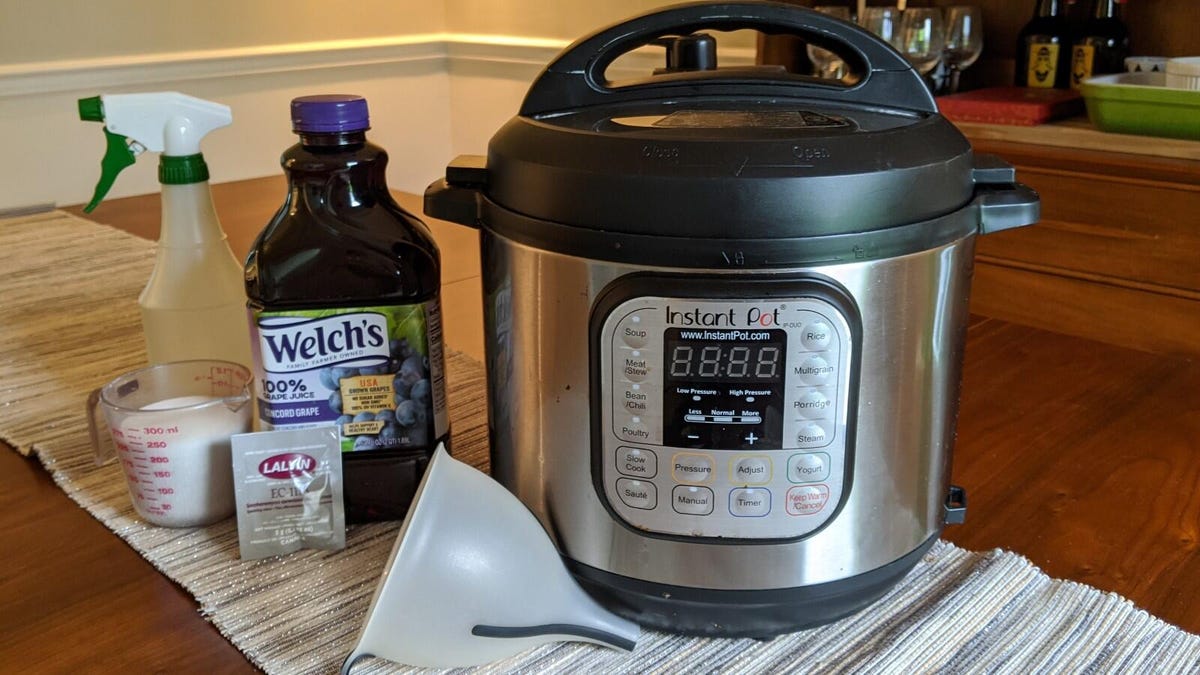
Gather what you need.
Brian Bennett/CNETGather your Instant Pot and ingredients
At the heart of this process is an Instant Pot with a "yogurt" function. Thankfully all but one Instant Pot model (the Lux) have that feature. So chances are, you're good to go. The main ingredient is grape juice. In this case I went with a 64-ounce bottle of Welch's Concord grape. The next item on the list is 1 cup of granulated sugar, along with one packet of wine yeast.
I must admit I goofed up slightly here. Instead of the recommended red wine yeast, I mistakenly ordered champagne yeast. This wasn't the end of the world: My vino may have even turned out better than it would have otherwise. Some among the home brewing community certainly sing the praises of Lalvin EC-1118, which is often used to brew mead, ciders and other fruit-based adult beverages.
Rounding out the list, you'll need a rinse-free sanitizer. In a real pinch you can also use a bleach solution (of over 1,000 ppm) to sanitize your equipment but doing that is dangerous. And don't forget a funnel so you don't make a huge mess.
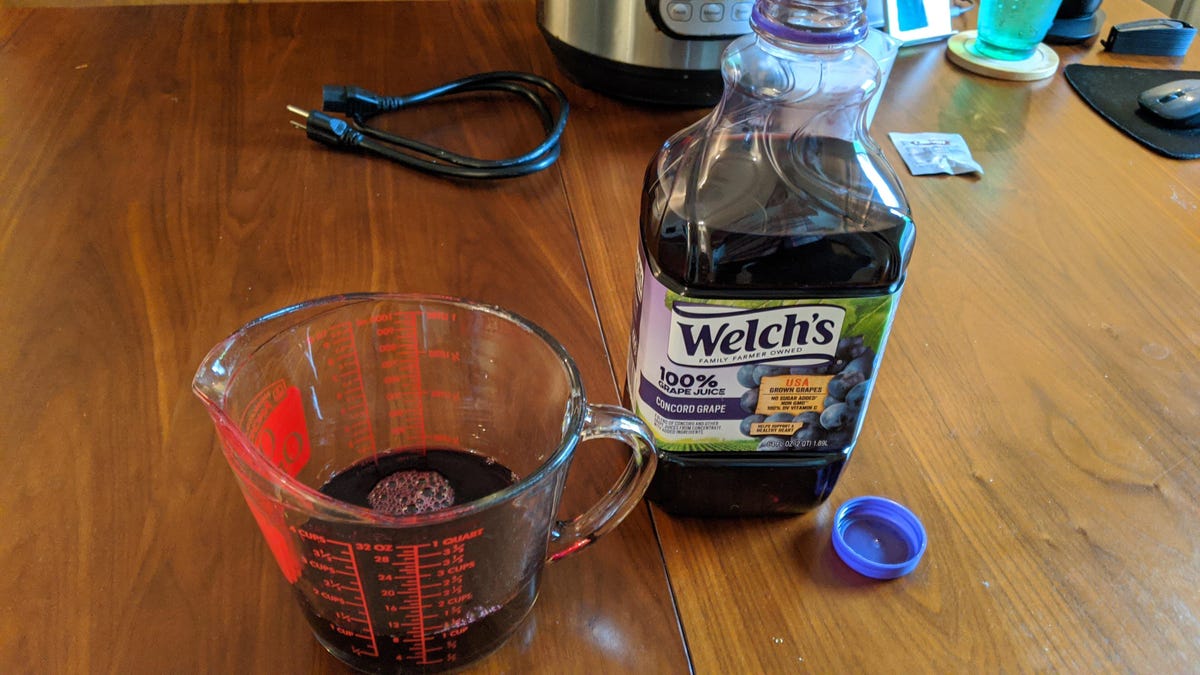
Remove one cup from the juice bottle and set it aside.
Brian Bennett/CNETSanitize the pot
Before you begin, make sure the inner pot of your Instant Pot is germ-free. In an ideal world, you should use a rinse-free sanitizer along with a chemical cleaner designed specifically for brewing equipment. Five Star's powder brewery wash and Star San sanitizer are good examples.
I used what I had on hand, a spray bottle I had already filled with a bleach solution (1,000-plus ppm). Yes, doing this is risky since bleach is a deadly poison. I don't recommend going this route, but if you do please take extra care. Make sure your equipment comes into contact with bleach solution for only five minutes. Also rinse all sanitized items thoroughly with water before use.
In my case I sprayed the inner pot plus the Instant Pot lid and silicone gasket. After five minutes, I rinsed these items well with water then hand dried them with a clean towel. You can be sure that I'll use proper cleaning and sanitizing agents for my next fermentation project.
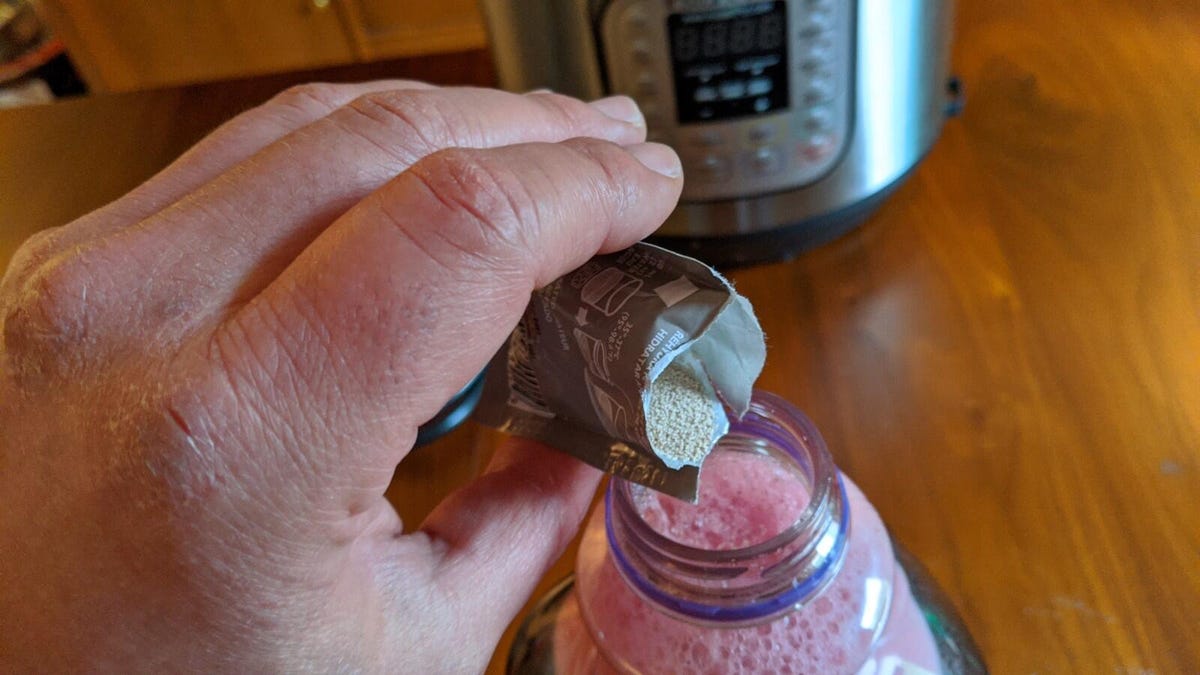
Add the yeast to the bottle.
Brian Bennett/CNETPrepare for fermentation
Open the juice bottle and remove 1 cup (8 ounces) of juice. Set this liquid aside and save it for later. Next, use the funnel to add the sugar to the juice bottle. Screw the bottle cap back on and shake it for two minutes. The idea here is to dissolve the sugar as much as possible. Now open the yeast packet and add half its contents to the bottle. With the cap closed, give it a few gentle shakes.
Pour the bottle's contents into the inner pot of your Instant Pot. Don't forget about the juice you saved. Also add that to the pot.
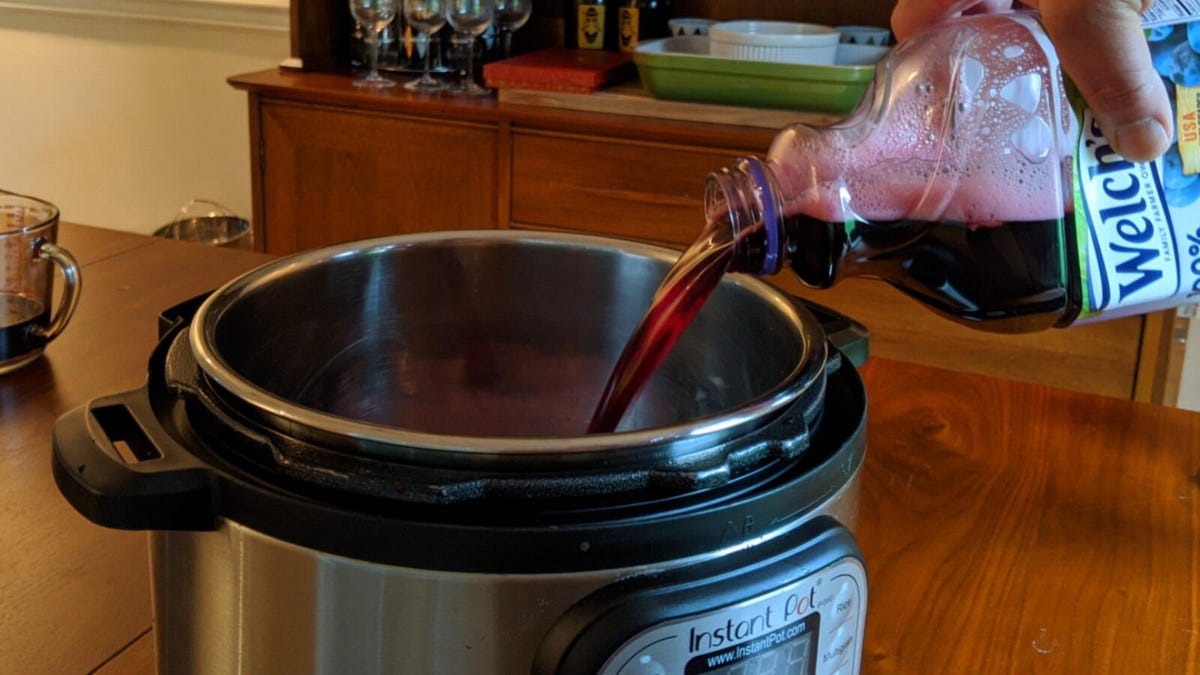
Pour the juice, sugar and yeast mixture into the Instant Pot's inner pot.
Brian Bennett/CNETInitiate the brew
Put the lid on your Instant Pot and lock it into place. Set the steam release valve to Venting. Next press the Yogurt button, then the Adjust button until the light labeled Less is selected. This will command the cooker to run at a lower temperature than its default.
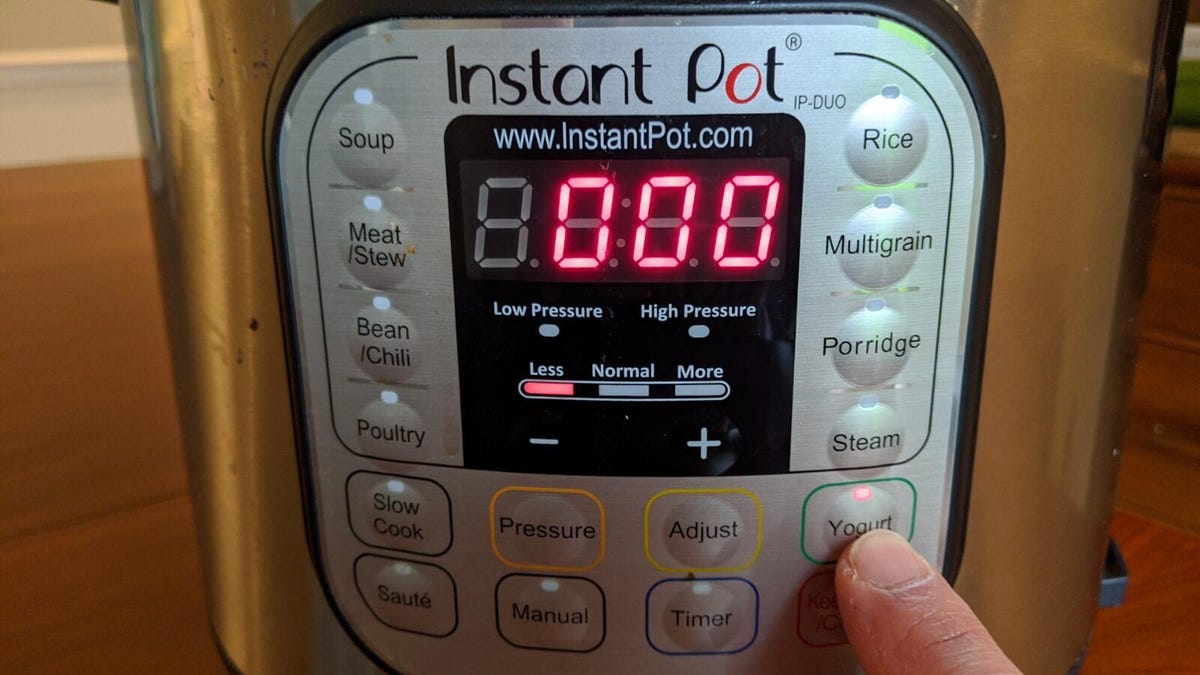
Use the yogurt mode on its "less" setting.
Brian Bennett/CNETNow you wait
Murphy recommends a 48-hour brewing time. He also suggests cycling the steam valve of your Instant Pot from open to closed every eight hours.
The final step is to transfer the liquid from the pot back into the plastic juice bottle. Before you do that, make sure to properly sanitize, rinse and dry the bottle. You'll also have to allow for CO2 gas created by any remaining yeast. An airlock gadget can handle that. Store the bottle in a room temperature-stable location away from light. There the wine solution should sit for a minimum of eight days, or as long as a month. At this point, I'm at just over a week.
The taste test
After 25 days of fermenting in the original bottle, I transferred the liquid into two large (32-ounce) swing-top glass bottles. I did this using an auto-siphon. I also made sure to sterilize everything first. This process helps clarify the wine, leaving most of the yeast sediment at the bottom of the original bottle.
After four days of rest, I couldn't resist tasting a sample. I flipped off the pop top of one bottle and poured a few ounces of liquid into a proper wine glass. Surprisingly, the aroma that hit my nose was very wine-like. The color was a clear light red, reminiscent of a young Beaujolais.
What I tasted was more astonishing. While there were definite grape juice notes, that fruitiness lacked sweetness. In fact the wine was dry, with the structure of a mild tannin finish. Not so bad. Don't get me wrong, this is no fine wine, or even barely mediocre wine. In fact, I'd prefer to drink two-buck Chuck. That said, it was real wine, and not overly sweet either. For supermarket grape juice and the wrong yeast, I call that a success.

 1 year ago
115
1 year ago
115










 English (US)
English (US)